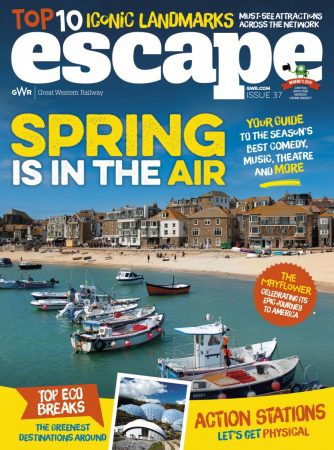Nine best places to spot wildlife in the South West
Home to birds, beast and critters of all kinds, the South West is a haven for wildlife. Here’s our guide to some of the creatures you might spot while out and about.
Us humans too often forget that we share this world with a whole host of different and fascinating animals. Whether on land, sea or air, wildlife in the South West is closer to hand than you might think. The below locations are prime spots for spotting some exceptional species, and all of them a short distance from the nearest GWR station.
Exmoor National Park
Wild red deer roam free in Exmoor National Park, and there are plenty of opportunities to see them in action – especially during the autumn when the rutting season starts. Also keep an eye out for some pretty cool fungi, such as the rare waxcap, not to mention an array of butterflies, birds, lichens and mosses.
Marazion Marsh
Marazion Marsh is an impressive looking corner of boggy Britain. If the season’s right, you’ll spot the glorious golden-ringed dragonfly. And don’t miss the resident family of stonechats (they’re a kind of bird, by the way).
Flat Holm Island
Take a boat trip from Cardiff Bay or Weston-super-Mare to Flat Holm Island to get among some of the finest wildlife in the UK. Once occupied by reclusive monks and territorial Vikings, the island is now home to some weird and wonderful plants, as well as some great gulls, including colonies of lesser black-backed gull. But really, it’s all about getting off the mainland for a stretch, with day trips available, as well as camping and dormitory accommodation. It’s a great place for all the family to experience wildlife wonders.
Falmouth
Believe it or not, there are plenty of opportunities to see dolphins off the coast of fair Blighty. Go to Falmouth and hop on one of the specially designed boat cruises that will take you out for a close encounter. You’ll be in with a chance of seeing common dolphins, seals and porpoises.
Forest of Dean
The Forest of Dean is a veritable haven for wildlife. It’s perhaps best known for its resident birds, including hawfinches, wood warblers and pied flycatchers, but it is also home to wild boar, which, as far as we at Escape are concerned, is pretty damned exciting. Do not, however, approach a wild boar, as they are sometimes a little hostile.
Dartmoor National Park
There have been ponies living on Dartmoor for over 3,500 years. The current population is free roaming, owned by Dartmoor Commoners who have special grazing rights. But if for some reason ponies are not your thing, you can always settle for the huge variety of birds, including buzzards and nightjars.
Cricklepit Mill
Try and spot the attraction’s resident otters out catching fish and generally doing a load of swimming – perhaps the cutest thing you’ll see this year. There are also sparrowhawks and herons to be spied.
devonwildlifetrust.org/Cricklepit-mill
Smallbrook Meadows
A great place to see otters in action, alongside kingfishers and maybe a water vole too, if you’re lucky, and all right next to the lovely town of Warminster.
Exe estuary
You’re best waiting till winter to head to the Exe Estuary, but when you get there, you’ll not be disappointed – it is a hot spot for avocet, the distinctive black and white wader that is the symbol of the RSPB. Take a boat trip from Exmouth to see some of the 25,000 wintering birds.




